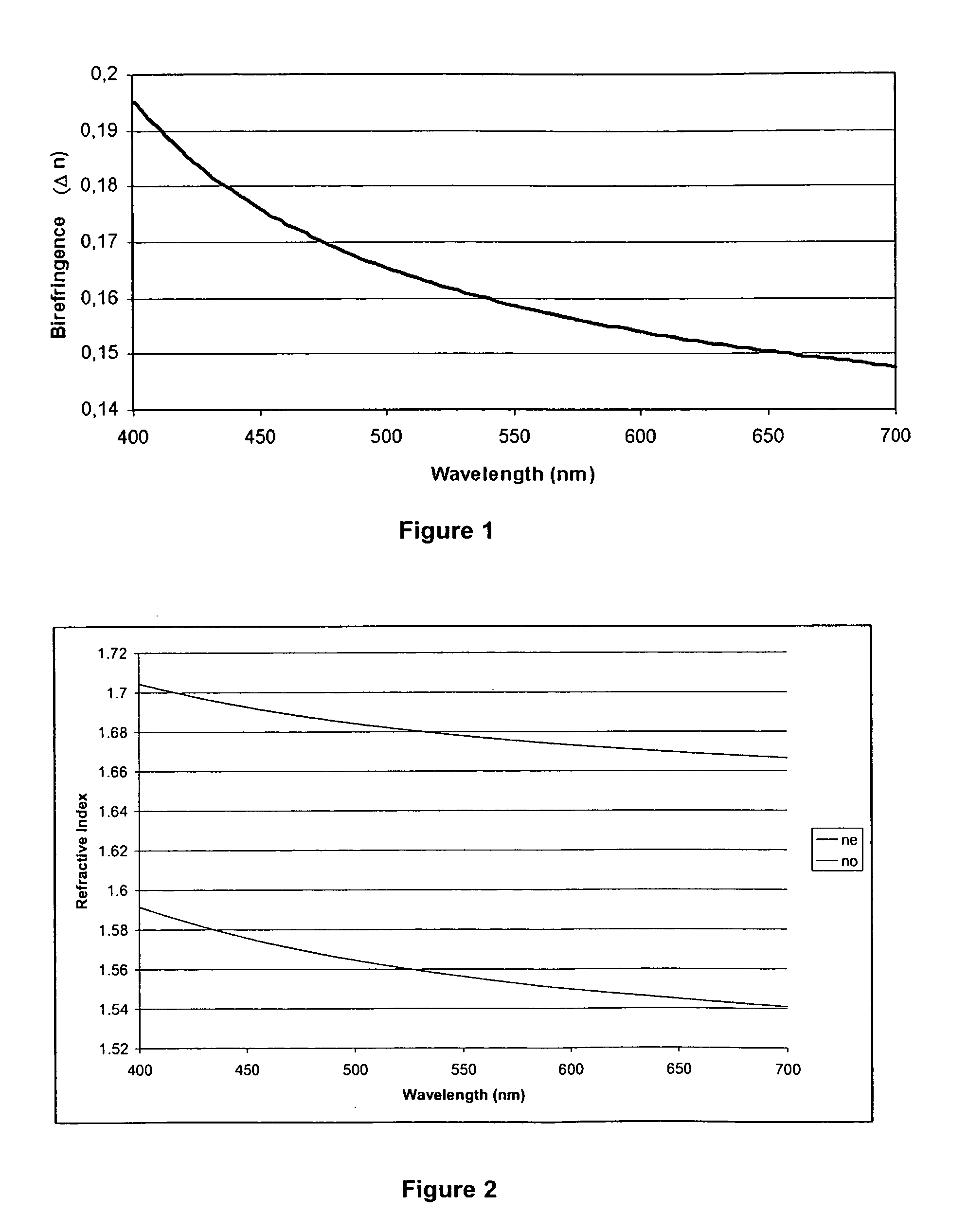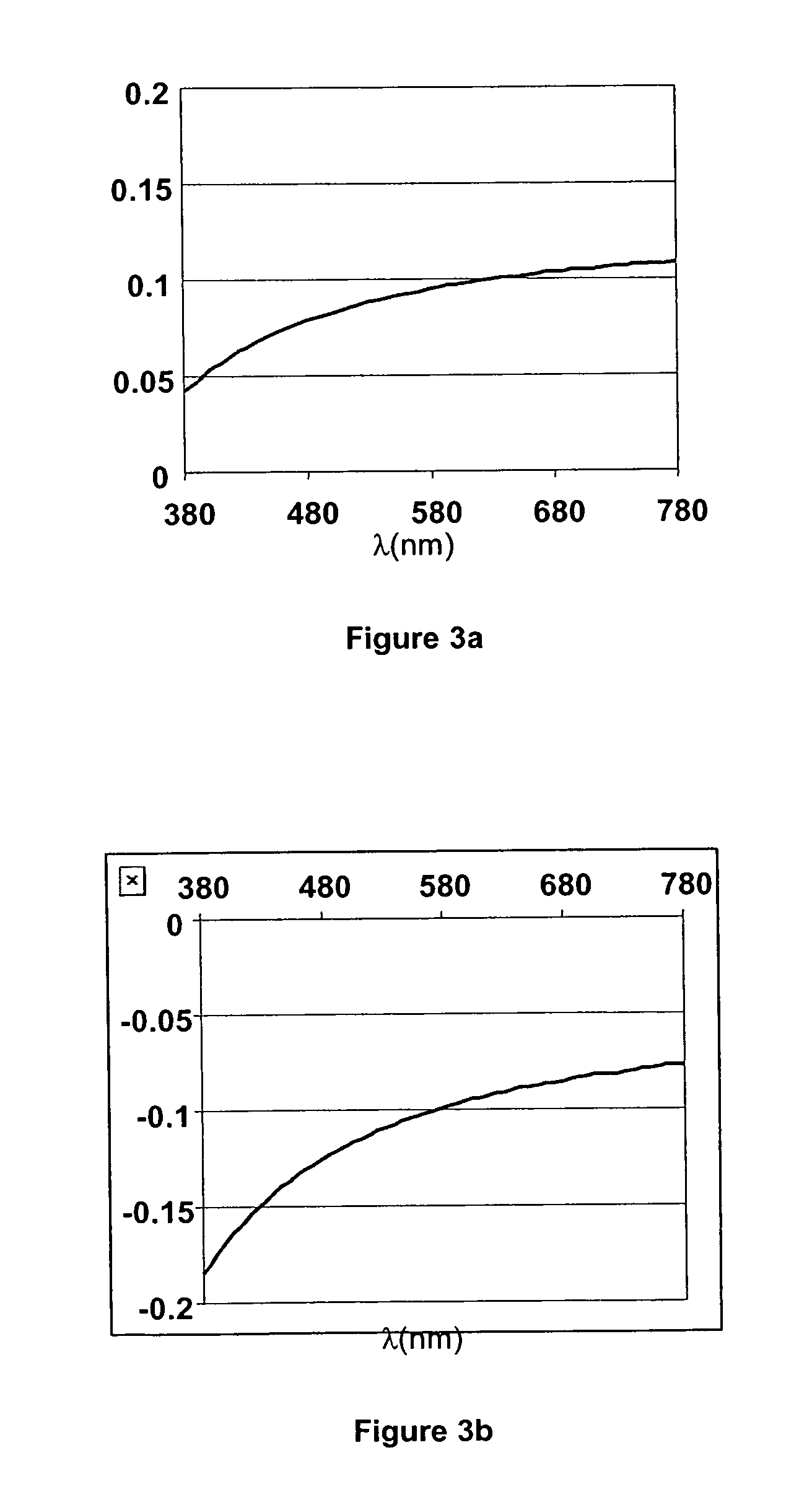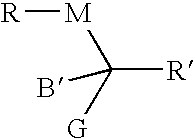Calamitic Mesogenic Compounds
a technology of calamitic mesogenic compounds and compounds, applied in the field of new calamitic mesogenic compounds, can solve the problems of not being able to disclose nor suggest polymerizable versions of these compounds, not being able to disclose nor suggest to use such compounds, and the thermal properties of the literature are not suitabl
- Summary
- Abstract
- Description
- Claims
- Application Information
AI Technical Summary
Benefits of technology
Problems solved by technology
Method used
Image
Examples
example 1
[0201]Example 1 (compound 1.9) is prepared via the route shown in Scheme 1.
[0202]Anisole and the acid chloride trans-4-propyl-cycloheaneacetyl chloride are reacted together under Friedel-Crafts conditions to give the ketone (1.1). Deportation of the methyl group yields the alcohol (1.2). Reaction of the alcohol (1.2) with DHP gives the THP protected ketone (1.3). Reaction of this ketone with trimethylsilylacetylene and BuLi gives the adduct (1.4) which is subsequently treated with a base to remove the trimethylsilyl group and reduced with trimethylsilane to give the acetylene (1.6). Homocoupling of this acetylene gives initially the diacetylene, and removal of the THP protecting groups gives the diacetylene-dialcohol (1.8). Subsequent esterification with 4-[3-(3-chloro-1-oxopropoxy)propoxy]-benzoic acid gives, after removal of HCl from the chloropropionate group, the target product (1.9).
[0203]Typical conditions for carrying out the silane reduction is disclosed in “Ruthenium-cataly...
example 2
[0205]Compound (2.4) is prepared using the compound (1.8) (“Intermediate 1”) from Example 1 as shown in scheme 2.
[0206]The intermediate dialcohol-diacetylene (intermediate 1) (1.8) is esterified with trans-4-[6-(Tetrahydropyran-2-yloxy)hexyloxy]cyclohexanecarboxylic acid (2.1). This saturated acid can be prepared according to the method disclosed in “The synthesis of liquid-crystalline diacrylates derived from cyclohexane units” by Lub, J.; van der Veen, J. H.; ten Hoeve, W. Recueil des Travaux Chimiques des Pays-Bas (1996), 115(6), 321-328. Deprotection of the product of this esterification reaction (2.2) gives the dialcohol (2.3). Esterification with acryloyl chloride gives the diacrylate (2.4).
example 3
[0207]Compound (3.2) is prepared using the compound (1.6) (“Intermediate 2”) from Example 1 as shown in scheme 3.
[0208]Removal of the THP protecting groups from the intermediate 2 (1.6) gives the diacetylene-dialcohol (3.1). Subsequent esterification with 4-[3-(3-chloro-1-oxopropoxy)propoxy]-benzoic acid gives, after removal of HCl from the chloropropionate group, the target product (3.2).
PUM
| Property | Measurement | Unit |
|---|---|---|
| Nanoscale particle size | aaaaa | aaaaa |
| Nanoscale particle size | aaaaa | aaaaa |
| Angle | aaaaa | aaaaa |
Abstract
Description
Claims
Application Information
 Login to View More
Login to View More - R&D
- Intellectual Property
- Life Sciences
- Materials
- Tech Scout
- Unparalleled Data Quality
- Higher Quality Content
- 60% Fewer Hallucinations
Browse by: Latest US Patents, China's latest patents, Technical Efficacy Thesaurus, Application Domain, Technology Topic, Popular Technical Reports.
© 2025 PatSnap. All rights reserved.Legal|Privacy policy|Modern Slavery Act Transparency Statement|Sitemap|About US| Contact US: help@patsnap.com



